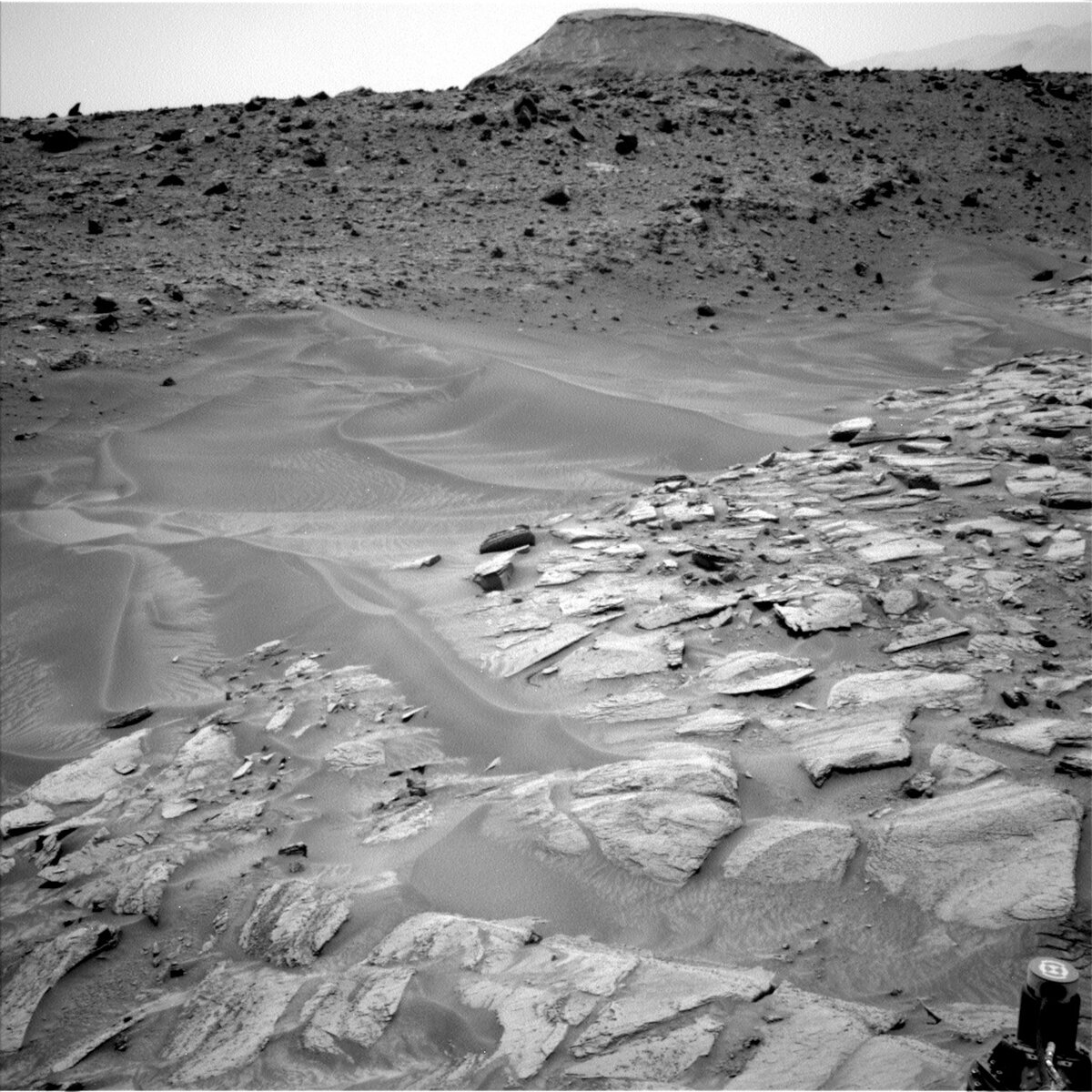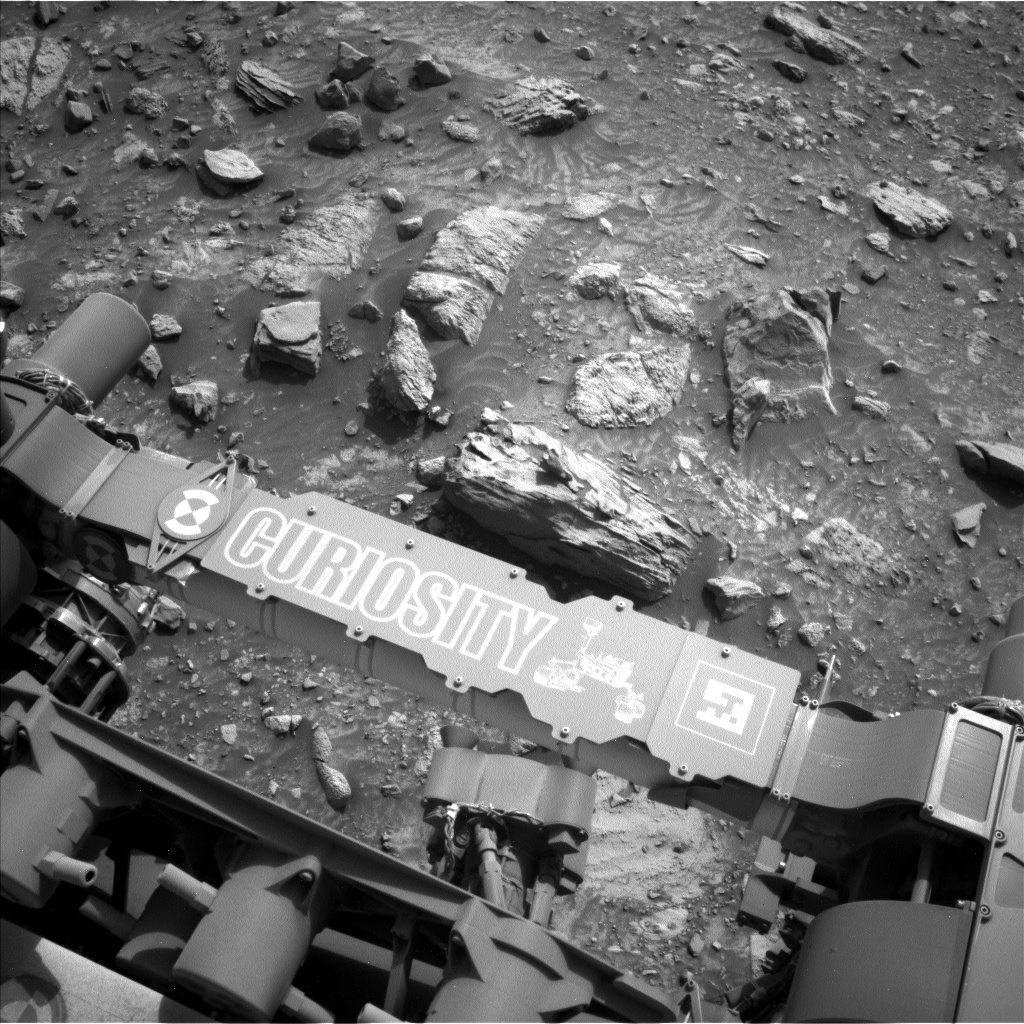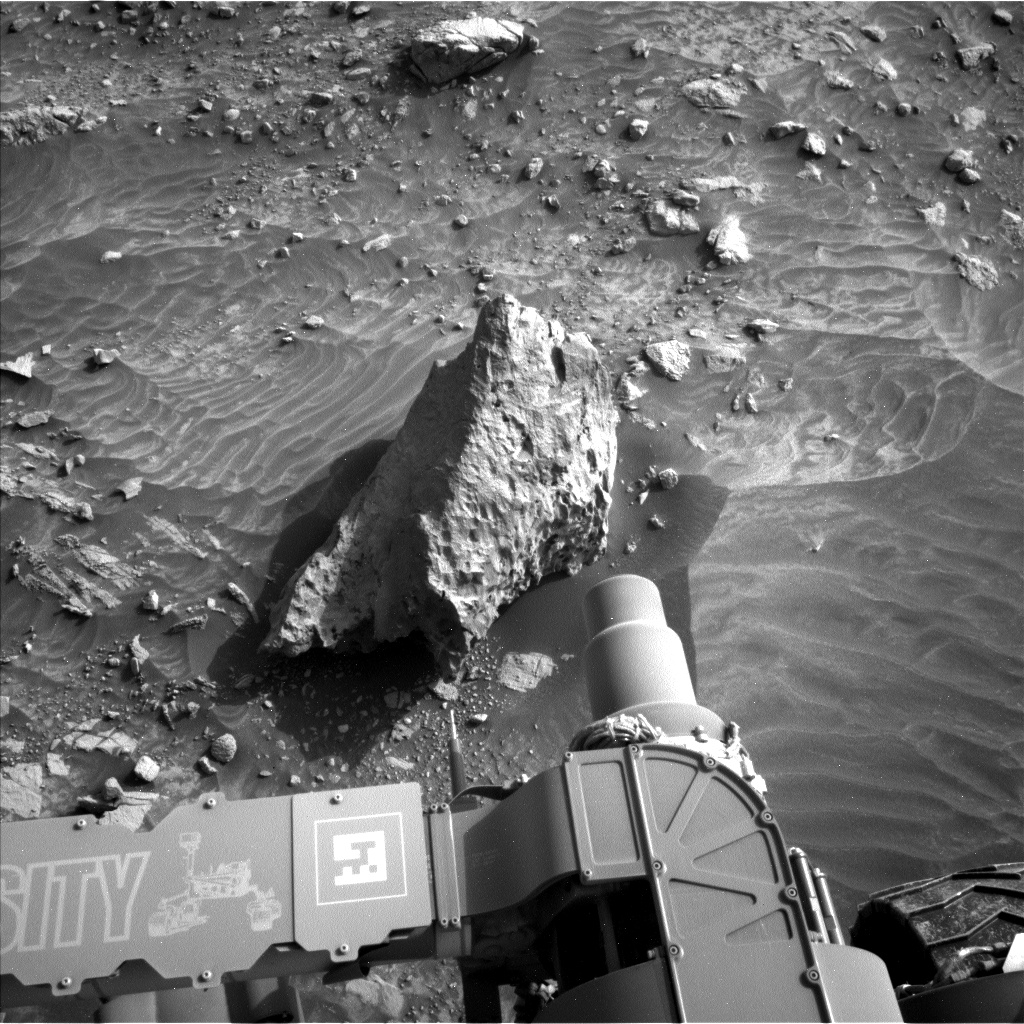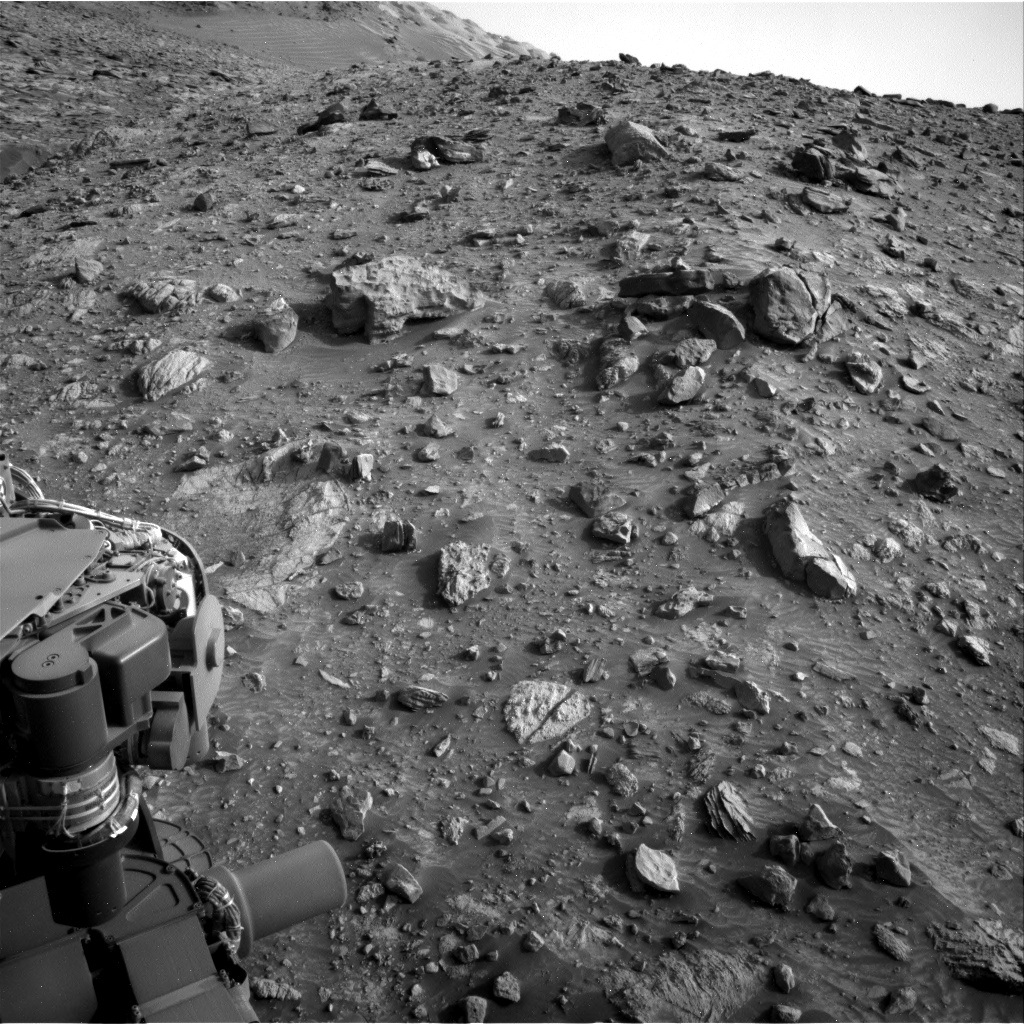3 min read

Earth planning date: Monday, February 12, 2024
One side effect of enjoying a very long mission is reaching fun number milestones. Usually that is "Sol 3000" or some other nice round number, but today we are planning the mathematically fun sol 2^12, also known as sol 4096.
Today I was on shift as a MAHLI uplink lead, so I was excited to think about contact science targets. Unfortunately, the team determined that Curiosity’s wheels are perched on some small rocks. When this happens, we worry about the rover shifting around if the weight of the rover causes the rocks to move a little. Even though the rover would likely only shift a tiny amount, when we have the arm ~2 cm away from the surface to take close approach MAHLI images, a tiny amount could have major consequences. Safety is always first on Mars, so we decided to focus on remote science today.
Fortunately, there are quite a few interesting targets in the area. The team identified a possible small, eroded crater not too far from Curiosity. Mastcam will target one side of the crater rim in the "Fischer Pass" mosaic, and ChemCam will perform a LIBS observation on a block (also called Fischer Pass) within the potential crater rim that has alternating dark toned rough layers and light toned smooth layers. Mastcam will target the other side of the potential crater rim in the "Hitchcock Lake" mosaic to document apparent distortions in the bedrock.
Mastcam will also take a mosaic of the base of Fascination Turret, which is a part of the Gediz Valley Ridge that we have a spectacular view of right now. ChemCam will take a Long Distance RMI mosaic of the Texoli butte.
Curiosity has been driving through an area surrounded by many buttes (for example, the Texoli butte). In today’s location a new butte came into view (see the image at the top of this blog post)! This butte, called "Wilkerson," is located across the Gediz Valley Ridge, so it has been obscured until now. We finally drove to a high enough location to see over the ridge, so Mastcam will capture the butte in a mosaic. Orbital images show that Wilkerson butte may have a mantling layer of unique rocks on top, so it will be interesting to see what it looks like from the ground.
Finally, Curiosity will continue to drive along Gediz Valley Ridge, and I’m sure we will have a great view at our next stop as well.
Written by Kristen Bennett, Planetary Geologist at USGS Astrogeology Science Center







